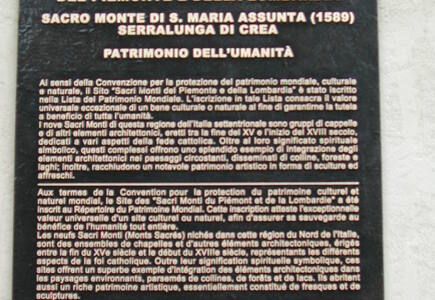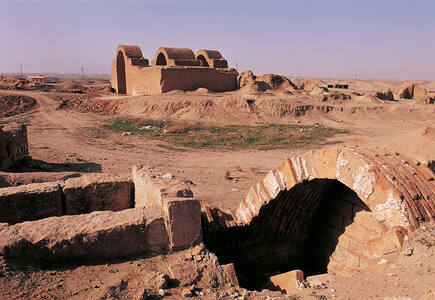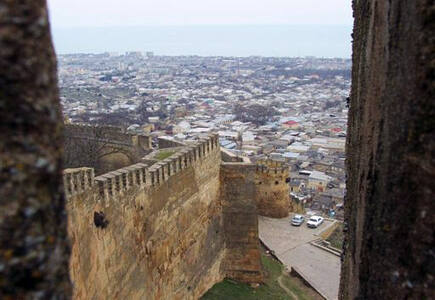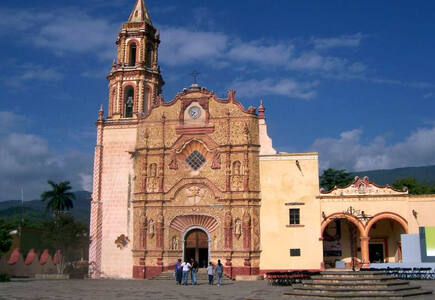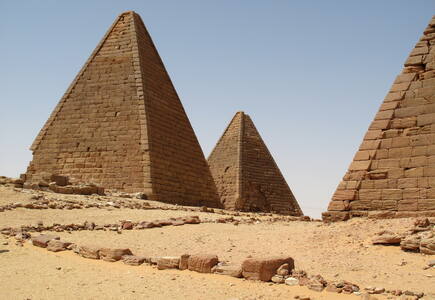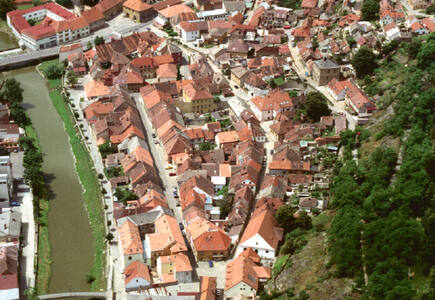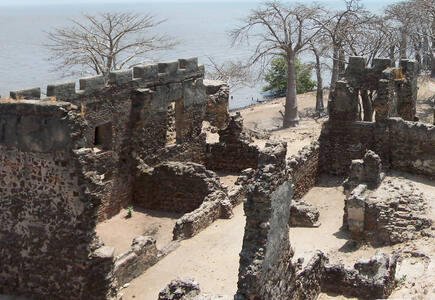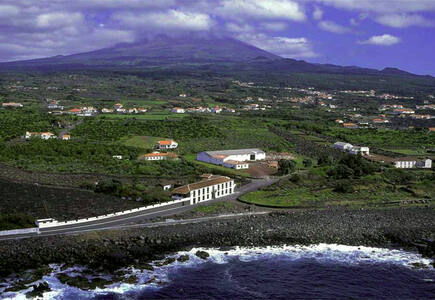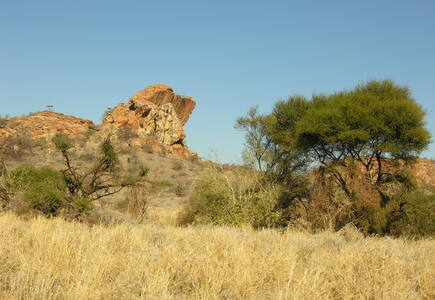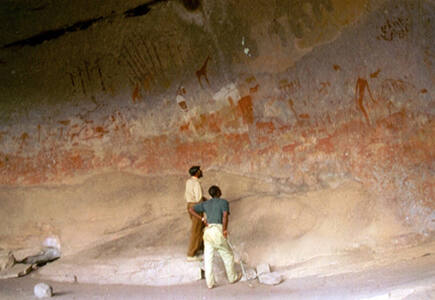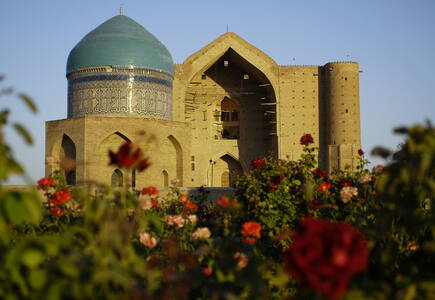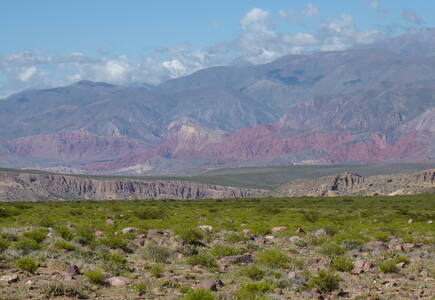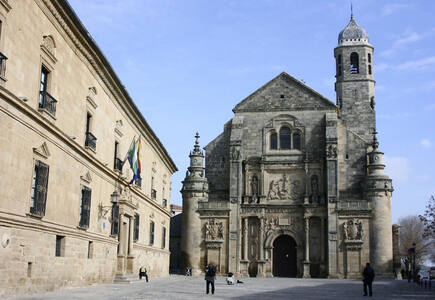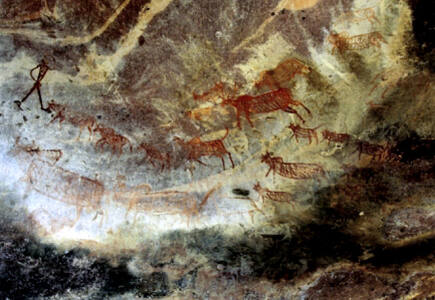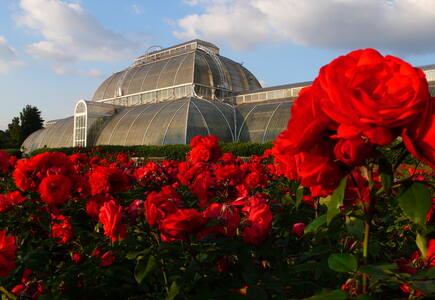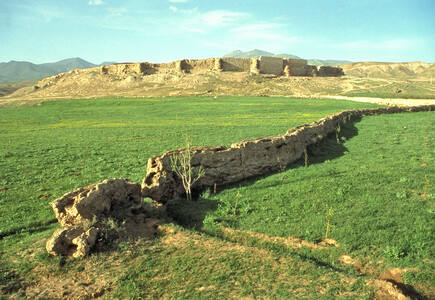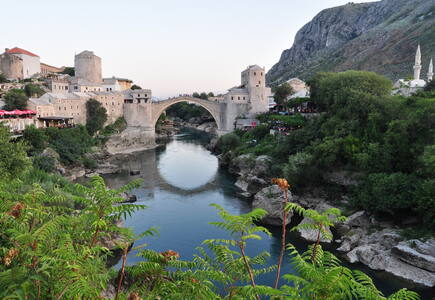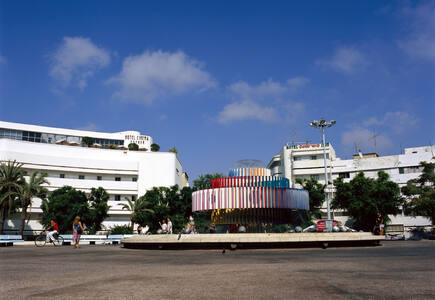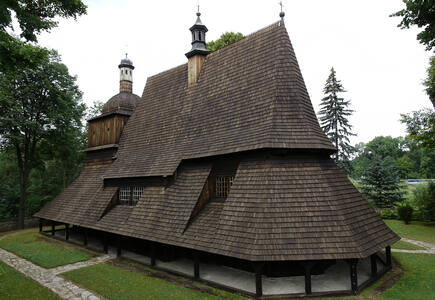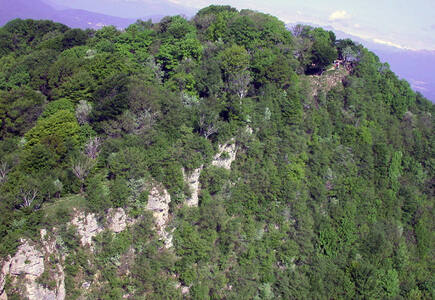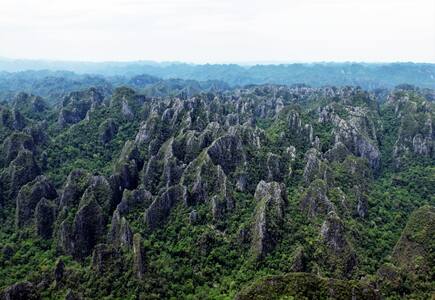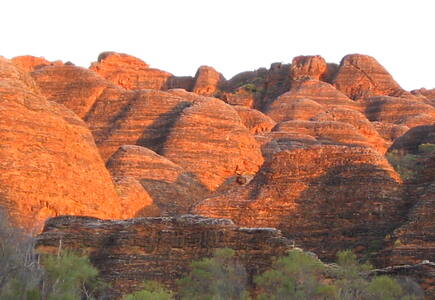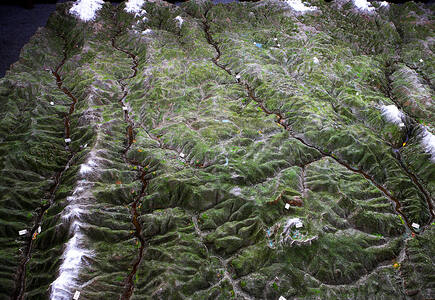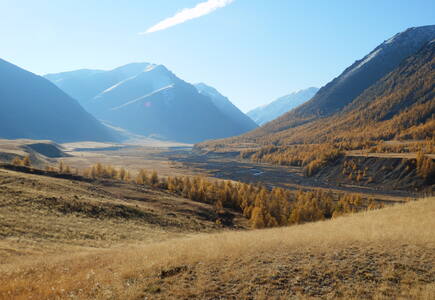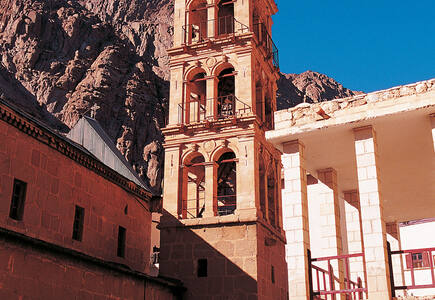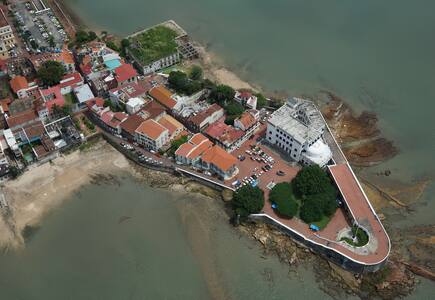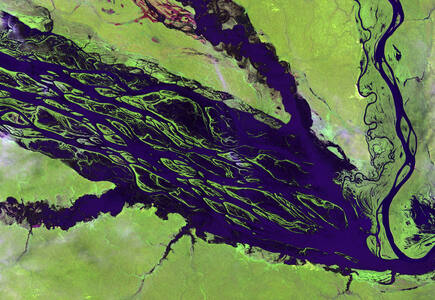Nominations to be examined
The Valley of the Pradnik River in the Ojcowski National Park
[in French only] La vallée de la Pradnik, dans le parc national d’Ojcow, est une petite gorge calcaire pittoresque, caractérisée par des traits géomorphologiques typiques et une dense concentration de caractéristiques culturelles : une longue histoire archéologique, principalement dans les grottes, et des édifices défensifs, à l’architecture soignée et vernaculaires. Au premier plan de la conservation en Pologne depuis le XIXe siècle, ce lieu est riche en associations artistiques et scientifiques et continue d’inspirer la création.
Nominations to be examined
Cultural properties
Sacri Monti of Piedmont and Lombardy
The nine Sacri Monti (Sacred Mountains) of northern Italy are groups of chapels and other architectural features created in the late 16th and 17th centuries and dedicated to different aspects of the Christian faith. In addition to their symbolic spiritual meaning, they are of great beauty by virtue of the skill with which they have been integrated into the surrounding natural landscape of hills, forests and lakes. They also house much important artistic material in the form of wall paintings and statuary.
Ashur (Qal'at Sherqat)
The ancient city of Ashur is located on the Tigris River in northern Mesopotamia in a specific geo-ecological zone, at the borderline between rain-fed and irrigation agriculture. The city dates back to the 3rd millennium BC. From the 14th to the 9th centuries BC it was the first capital of the Assyrian Empire, a city-state and trading platform of international importance. It also served as the religious capital of the Assyrians, associated with the god Ashur. The city was destroyed by the Babylonians, but revived during the Parthian period in the 1st and 2nd centuries AD.
Citadel, Ancient City and Fortress Buildings of Derbent
The Citadel, Ancient City and Fortress Buildings of Derbent were part of the northern lines of the Sasanian Persian Empire, which extended east and west of the Caspian Sea. The fortification was built in stone. It consisted of two parallel walls that formed a barrier from the seashore up to the mountain. The town of Derbent was built between these two walls, and has retained part of its medieval fabric. The site continued to be of great strategic importance until the 19th century.
Cultural Landscape and Archaeological Remains of the Bamiyan Valley
The cultural landscape and archaeological remains of the Bamiyan Valley represent the artistic and religious developments which from the 1st to the 13th centuries characterized ancient Bakhtria, integrating various cultural influences into the Gandhara school of Buddhist art. The area contains numerous Buddhist monastic ensembles and sanctuaries, as well as fortified edifices from the Islamic period. The site is also testimony to the tragic destruction by the Taliban of the two standing Buddha statues, which shook the world in March 2001.
Franciscan Missions in the Sierra Gorda of Querétaro
The five Franciscan missions of Sierra Gorda were built during the last phase of the conversion to Christianity of the interior of Mexico in the mid-18th century and became an important reference for the continuation of the evangelization of California, Arizona and Texas. The richly decorated church façades are of special interest as they represent an example of the joint creative efforts of the missionaries and the Indios. The rural settlements that grew around the missions have retained their vernacular character.
Gebel Barkal and the Sites of the Napatan Region
These five archaeological sites, stretching over more than 60 km in the Nile valley, are testimony to the Napatan (900 to 270 BC) and Meroitic (270 BC to 350 AD) cultures, of the second kingdom of Kush. Tombs, with and without pyramids, temples, living complexes and palaces, are to be found on the site. Since Antiquity, the hill of Gebel Barkal has been strongly associated with religious traditions and folklore. The largest temples are still considered by the local people as sacred places.
Historic Quarter of the Seaport City of Valparaíso
The colonial city of Valparaíso presents an excellent example of late 19th-century urban and architectural development in Latin America. In its natural amphitheatre-like setting, the city is characterized by a vernacular urban fabric adapted to the hillsides that are dotted with a great variety of church spires. It contrasts with the geometrical layout utilized in the plain. The city has well preserved its interesting early industrial infrastructures, such as the numerous ‘elevators’ on the steep hillsides.
Jewish Quarter and St Procopius' Basilica in Třebíč
The ensemble of the Jewish Quarter, the old Jewish cemetery and the Basilica of St Procopius in Třebíč are reminders of the co-existence of Jewish and Christian cultures from the Middle Ages to the 20th century. The Jewish Quarter bears outstanding testimony to the different aspects of the life of this community. St Procopius' Basilica, built as part of the Benedictine monastery in the early 13th century, is a remarkable example of the influence of Western European architectural heritage in this region.
Kunta Kinteh Island and Related Sites
James Island and Related Sites present a testimony to the main periods and facets of the encounter between Africa and Europe along the River Gambia, a continuum stretching from pre-colonial and pre-slavery times to independence. The site is particularly significant for its relation to the beginning of the slave trade and its abolition. It also documents early access to the interior of Africa.
Landscape of the Pico Island Vineyard Culture
[in French only] Pico est une île volcanique de l’archipel des Açores, située à quelque 1 500 km à l’ouest du Portugal. Dans sa partie nord-ouest survit un étonnant paysage où s’entrecroisent de longs murs de pierres très espacés. Ces espaces contiennent des milliers de petits enclos, les currais, qui étaient traditionnellement voués à la viticulture, mais dont beaucoup sont en friche. Le bien est composé de deux zones, dont l’une située à proximité de Santa Luzia, où les currais sont abandonnés. L’autre zone, située à Criaçao Velha, présente des enclos parfaitement conservés et plantés de vignobles, dont la production concilie viabilité et authenticité.Mapungubwe Cultural Landscape
Mapungubwe is set hard against the northern border of South Africa, joining Zimbabwe and Botswana. It is an open, expansive savannah landscape at the confluence of the Limpopo and Shashe rivers. Mapungubwe developed into the largest kingdom in the sub-continent before it was abandoned in the 14th century. What survives are the almost untouched remains of the palace sites and also the entire settlement area dependent upon them, as well as two earlier capital sites, the whole presenting an unrivalled picture of the development of social and political structures over some 400 years.
Matobo Hills
The area exhibits a profusion of distinctive rock landforms rising above the granite shield that covers much of Zimbabwe. The large boulders provide abundant natural shelters and have been associated with human occupation from the early Stone Age right through to early historical times, and intermittently since. They also feature an outstanding collection of rock paintings. The Matobo Hills continue to provide a strong focus for the local community, which still uses shrines and sacred places closely linked to traditional, social and economic activities.
Mausoleum of Khoja Ahmed Yasawi
The Mausoleum of Khoja Ahmed Yasawi, in the town of Yasi, now Turkestan, was built at the time of Timur (Tamerlane), from 1389 to 1405. In this partly unfinished building, Persian master builders experimented with architectural and structural solutions later used in the construction of Samarkand, the capital of the Timurid Empire. Today, it is one of the largest and best-preserved constructions of the Timurid period.
Orkhon Valley Cultural Landscape
[in French only] Ce paysage culturel est composé de vastes pâturages s’étendant de chaque côté de l’Orkhon, où se trouvent plusieurs vestiges archéologiques et cinq grands sites, dont Karakorum, la capitale du vaste empire mongol de Gengis Khan. Collectivement, ces vestiges reflètent les liens symbiotiques entre les sociétés pastorales nomades et leurs centres administratifs et religieux, et l’importance de la vallée de l’Orkhon dans l’histoire de l’Asie centrale pendant les deux derniers millénaires. Les pâturages sont encore utilisés aujourd’hui par les bergers nomades de Mongolie.Parque Nacional del Este and its buffer zone
[in French only] Le Parc del Este est un parc national comprenant une péninsule et une île à l’environnement sub-tropical. C’est un haut lieu de la culture taïno de l’époque pré-hispanique, qui s’éteignit brutalement dans les trois décennies qui suivirent l’arrivée de Christophe Colomb en 1494. L’isolement qui s’ensuivit et la protection de la forêt ont conservé intactes de vastes et précieuses ressources archéologiques, hispaniques et indigènes, datant du début du XVIe siècle et d’avant. Le site comprend un exceptionnel ensemble d’art rupestre (peintures et pétroglyphes) qui compte parmi les plus grands du monde et qui, du point de vue scientifique et artistique, n’a rien à envier aux sites comparables les plus importants de tout le continent américain.Quebrada de Humahuaca
Quebrada de Humahuaca follows the line of a major cultural route, the Camino Inca, along the spectacular valley of the Rio Grande, from its source in the cold high desert plateau of the High Andean lands to its confluence with the Rio Leone some 150 km to the south. The valley shows substantial evidence of its use as a major trade route over the past 10,000 years. It features visible traces of prehistoric hunter-gatherer communities, of the Inca Empire (15th to 16th centuries) and of the fight for independence in the 19th and 20th centuries.
Renaissance Monumental Ensembles of Úbeda and Baeza
The urban morphology of the two small cities of Úbeda and Baeza in southern Spain dates back to the Moorish 9th century and to the Reconquista in the 13th century. An important development took place in the 16th century, when the cities were subject to renovation along the lines of the emerging Renaissance. This planning intervention was part of the introduction into Spain of new humanistic ideas from Italy, which went on to have a great influence on the architecture of Latin America.
Rio de Janeiro: Sugar Loaf, Tijuca Forest and the Botanical Gardens
[in French only] Le bien est composé du parc national de Tijuca et de trois promontoires qui se trouvent tous à l’intérieur de la ville de Rio de Janeiro. Il comprend aussi les jardins botaniques de Rio de Janeiro, Corcovado avec sa statue du Christ et le Pain de Sucre qui est l’un des trois promontoires qui domine la baie de Guanabara et l’approche de la ville par la mer. L’ensemble est très apprécié des habitants et des visiteurs pour son agrément et pour les valeurs symboliques qu’il dégage pour les Brésiliens.Rock Shelters of Bhimbetka
The Rock Shelters of Bhimbetka are in the foothills of the Vindhyan Mountains on the southern edge of the central Indian plateau. Within massive sandstone outcrops, above comparatively dense forest, are five clusters of natural rock shelters, displaying paintings that appear to date from the Mesolithic Period right through to the historical period. The cultural traditions of the inhabitants of the twenty-one villages adjacent to the site bear a strong resemblance to those represented in the rock paintings.
Royal Botanic Gardens, Kew
This historic landscape garden features elements that illustrate significant periods of the art of gardens from the 18th to the 20th centuries. The gardens house botanic collections (conserved plants, living plants and documents) that have been considerably enriched through the centuries. Since their creation in 1759, the gardens have made a significant and uninterrupted contribution to the study of plant diversity and economic botany.
Takht-e Soleyman
The archaeological site of Takht-e Soleyman, in north-western Iran, is situated in a valley set in a volcanic mountain region. The site includes the principal Zoroastrian sanctuary partly rebuilt in the Ilkhanid (Mongol) period (13th century) as well as a temple of the Sasanian period (6th and 7th centuries) dedicated to Anahita. The site has important symbolic significance. The designs of the fire temple, the palace and the general layout have strongly influenced the development of Islamic architecture.
The First Railway Bridge over the Yenisei River
The Old City of Mostar
[in French only] La ville historique de Mostar, nichée dans une profonde vallée fluviale, est une ancienne ville frontière ottomane qui s’est développée aux XVe et XVIe siècles, et a connu une courte période austro-hongroise aux XIXe et XXe siècles. Mostar se caractérise par ses vieilles maisons turques et par le Vieux Pont, conçu par un architecte célèbre, Sinan. Dans les années 1990 cependant, la majeure partie de la ville historique et le Vieux Pont ont été détruits.White City of Tel-Aviv – the Modern Movement
Tel Aviv was founded in 1909 and developed as a metropolitan city under the British Mandate in Palestine. The White City was constructed from the early 1930s until the 1950s, based on the urban plan by Sir Patrick Geddes, reflecting modern organic planning principles. The buildings were designed by architects who were trained in Europe where they practised their profession before immigrating. They created an outstanding architectural ensemble of the Modern Movement in a new cultural context.
Wooden Churches of Southern Małopolska
The wooden churches of southern Little Poland represent outstanding examples of the different aspects of medieval church-building traditions in Roman Catholic culture. Built using the horizontal log technique, common in eastern and northern Europe since the Middle Ages, these churches were sponsored by noble families and became status symbols. They offered an alternative to the stone structures erected in urban centres.
Nominations to be examined
Natural properties
Monte San Giorgio
The pyramid-shaped, wooded mountain (1,096 m above sea level), to the south of Lake Lugano in Canton Ticino is regarded as the best fossil record of marine life from the Triassic Period (245–230 million years ago). The sequence records life in a tropical lagoon environment, sheltered and partially separated from the open sea by an offshore reef. Diverse marine life flourished within this lagoon, including reptiles, fish, bivalves, ammonites, echinoderms and crustaceans. Because the lagoon was near to land, the fossil remains also include some land-based fossils including reptiles, insects and plants. The result is a fossil resource of great richness.
Phong Nha-Ke Bang National Park
The karst formation of Phong Nha-Ke Bang National Park has evolved since the Palaeozoic (some 400 million years ago) and so is the oldest major karst area in Asia. Subject to massive tectonic changes, the park’s karst landscape is extremely complex with many geomorphic features of considerable significance. The vast area, extending to the border of the Lao People’s Democratic Republic, contains spectacular formations including 65 km of caves and underground rivers.
Purnululu National Park
The 239,723 ha Purnululu National Park is located in the State of Western Australia. It contains the deeply dissected Bungle Bungle Range composed of Devonian-age quartz sandstone eroded over a period of 20 million years into a series of beehive-shaped towers or cones, whose steeply sloping surfaces are distinctly marked by regular horizontal bands of dark-grey cyanobacterial crust (single-celled photosynthetic organisms). These outstanding examples of cone karst owe their existence and uniqueness to several interacting geological, biological, erosional and climatic phenomena.
Ras Mohammed
Three Parallel Rivers of Yunnan Protected Areas
Consisting of eight geographical clusters of protected areas within the boundaries of the Three Parallel Rivers National Park, in the mountainous north-west of Yunnan Province, the 1.7 million hectare site features sections of the upper reaches of three of the great rivers of Asia: the Yangtze (Jinsha), Mekong and Salween run roughly parallel, north to south, through steep gorges which, in places, are 3,000 m deep and are bordered by glaciated peaks more than 6,000 m high. The site is an epicentre of Chinese biodiversity. It is also one of the richest temperate regions of the world in terms of biodiversity.
Uvs Nuur Basin
The Uvs Nuur Basin (1,068,853 ha), is the northernmost of the enclosed basins of Central Asia. It takes its name from Uvs Nuur Lake, a large, shallow and very saline lake, important for migrating birds, waterfowl and seabirds. The site is made up of twelve protected areas representing the major biomes of eastern Eurasia. The steppe ecosystem supports a rich diversity of birds and the desert is home to a number of rare gerbil, jerboas and the marbled polecat. The mountains are an important refuge for the globally endangered snow leopard, mountain sheep (argali) and the Asiatic ibex.
Significant modifications to the boundaries
Saint Catherine Area
Serra da Capivara National Park
[in French only] Les Aires protégées d’Amazonie centrale (4 882 000 hectares), qui incluent le Parc national Jaú, forment la plus grande zone protégée du bassin amazonien et l'une des régions les plus riches de la planète sur le plan de la diversité biologique. Le site comprend l’ensemble du bassin de la rivière Jaú, considérée comme le meilleur exemple de l'écosystème dit « des eaux noires ». On y trouve également un exemple significatif d’écosystèmes de varzea, des forêts d’igapó, des lacs et des cours d’eau qui forment une mosaïque en perpétuelle évolution de bras de rivières, de plans d’eau et de formes de relief où évolue la plus grande diversité de poissons électriques du monde. Le site abrite des espèces menacées clés, notamment l’arapaima géant, le lamantin de l’Amazone, le caïman noir et deux espèces de dauphins fluviatiles.
Significant modifications to the boundaries
Cultural properties
Archaeological Site of Panamá Viejo and Historic District of Panamá
Founded in 1519 by the conquistador Pedrarías Dávila, Panamá Viejo is the oldest European settlement on the Pacific coast of the Americas. It was laid out on a rectilinear grid and marks the transference from Europe of the idea of a planned town. Abandoned in the mid-17th century, it was replaced by a ‘new town’ (the ‘Historic District’), which has also preserved its original street plan, its architecture and an unusual mixture of Spanish, French and early American styles. The Salón Bolívar was the venue for the unsuccessful attempt made by El Libertador in 1826 to establish a multinational continental congress.
Imperial Tombs of the Ming and Qing Dynasties
It represents the addition of three Imperial Tombs of the Qing Dynasty in Liaoning to the Ming tombs inscribed in 2000 and 2003. The Three Imperial Tombs of the Qing Dynasty in Liaoning Province include the Yongling Tomb, the Fuling Tomb, and the Zhaoling Tomb, all built in the 17th century. Constructed for the founding emperors of the Qing Dynasty and their ancestors, the tombs follow the precepts of traditional Chinese geomancy and fengshui theory. They feature rich decoration of stone statues and carvings and tiles with dragon motifs, illustrating the development of the funerary architecture of the Qing Dynasty. The three tomb complexes, and their numerous edifices, combine traditions inherited from previous dynasties and new features of Manchu civilization.
Significant modifications to the boundaries
Natural properties
Central Amazon Conservation Complex
The Central Amazon Conservation Complex makes up the largest protected area in the Amazon Basin and is one of the planet’s richest regions in terms of biodiversity. It also includes an important sample of varzea ecosystems, igapó forests, lakes and channels which take the form of a constantly evolving aquatic mosaic that is home to the largest array of electric fish in the world. The site protects key threatened species, including giant arapaima fish, the Amazonian manatee, the black caiman and two species of river dolphin.
By session
Views
World Heritage List statistics
